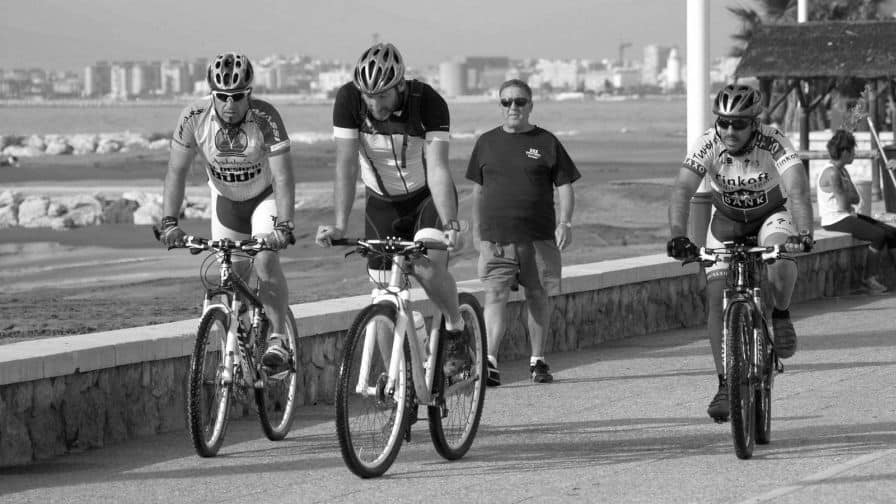The official ‘January travel peak’ may have finished over the weekend but the predicted trends for 2015 are still very much settling in as we look forward to another 12 months of new consumer patterns, industry terms and emergent markets that will influence where and how we all travel.
Back in November last year I attended London’s World Travel Market and amidst the titanic melee of trade stands, talks and other travel paraphernalia I was lucky enough to catch the Global Trends Report featuring some of the staff at Euromonitor International, the market intelligence firm. Their annual report has an accurate knack of highlighting nascent trends that often take off within the industry and anointing them with annoyingly catchy labels. I’ve picked out some of my favourites just below which may well establish themselves in the coming months:
The rise of the MAMILs and cycle tourism
One of the trends that featured prominently in the report was the rise in cycle tourism, particularly in America, where cycling is rapidly growing as an industry. Cycling is increasingly seen as a popular leisure pursuit for older men where it has filled the gap left by a significant drop in golf participation, leading to Euromonitor baptising these cyclists as MAMILs or ‘Middle Aged Men In Lycra’.
While the popularity of golf hit its peak in the US in the early 2000s (primarily due to the success of Tiger Woods) with around 25m players the sport has seen a dramatic decline recently (along with Tiger Woods, who coincidentally shot his worst ever round last Friday at the Phoenix Open) with the number of active players thought to be around 19m now. By contrast, according to cycling research firm Gluskin Townley Group, the number of cycling enthusiasts has risen from 3.5m in 2012 to 3.8m in 2013 alone.
With cycle tourism deemed to be a particularly lucrative industry (overnight spend is thought to be around 20% more than for the average traveller) more travel brands and tourists boards are anticipated to reach out to this niche with more tailored offerings to them and their bikes.
‘Poshtels’ – UK hostels get a facelift
Euromonitor also highlighted the re-invention of the UK hostel in 2015 as a low-cost accommodation alternative. With the onset of the recession, travellers’ consumption patterns shifted as they increasingly looked for cheaper options and more ‘authentic’ experiences. Hostels are therefore hoping to attract the budget-conscious, style-seeking consumer by redesigning their accommodation as an inexpensive alternative to boutique hotels with a more social aspect in their communal environments. This concept is anticipated to be particularly popular with the young, families, business and single travellers.
VisitEngland have already highlighted the hostel segment as one that is growing and over the next few years, between 2013 – 2018 it is expected to grow by around 3% to reach sales of around £216m in 2018.
‘Braggies’ – The new selfies
It seems these days that everyone likes to share their latest pics through various social media channels and with more and more people signing up online this is only set to continue. According to a survey by eMarketer the number of social media users across the globe increased by 18% in 2013 to exceed 1.7 billion users. And Facebook revealed that in 2013 there were on average 350m photos uploaded daily, while Instagram had 58m daily and Whatsapp saw 400m image uploads per day.
Travel has already established itself as one of the more popular subjects to be shared visually online with numerous users taking selfies whilst on holiday and this popularity has spawned a new phenomenon that has been labelled the ‘braggie’.
‘Braggies’ are essentially an extension of selfies and involve people uploading and sharing their photos of their holidays in order to brag about them with their friends. Whether it be highlighting their hotel rooms and accommodation or showing off the local scenery or landmarks around them this is something that’s increasingly prevalent online.
And savvy brands have been quick to exploit this opportunity by incentivising guests to post such pictures onto their social media platforms and offering them rewards such as free WiFi or vouchers in exchange. In the US, Kimpton Hotels introduced the Kimpton Karma Rewards programme that offered perks for guests posting on social media, while Marriott launched their PlusPoints programme where guests could earn points for such actions.
2015 is sure to see many other travel trends and terms take off that we could never anticipate but if you do start to see middle aged cyclists sharing photos of their boutique hostel accommodation online then at least you can say that you’ve spotted a MAMIL’s poshtel braggie.

